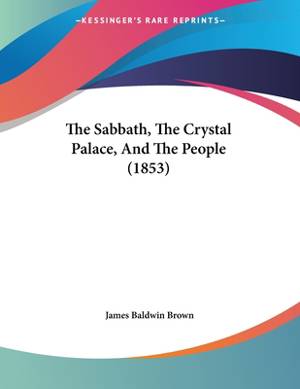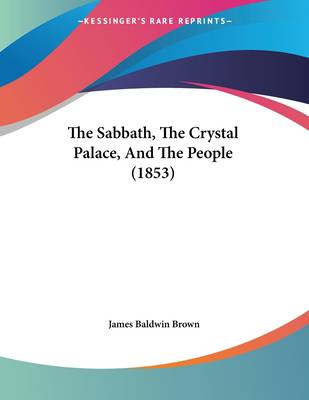
- Afhalen na 1 uur in een winkel met voorraad
- Gratis thuislevering in België vanaf € 30
- Ruim aanbod met 7 miljoen producten
- Afhalen na 1 uur in een winkel met voorraad
- Gratis thuislevering in België vanaf € 30
- Ruim aanbod met 7 miljoen producten
Zoeken
€ 32,45
+ 64 punten
Omschrijving
The Sabbath, The Crystal Palace, And The People is a book written by James Baldwin Brown in 1853. This book explores the social and economic changes that occurred during the mid-19th century in England. The author focuses on the impact of the Industrial Revolution on the working class and their struggle for better working conditions and wages. The book is divided into two parts. The first part deals with the Sabbath, which was a day of rest for the working class. The author argues that the Sabbath was an important institution for the working class, as it provided them with a much-needed break from their work and allowed them to spend time with their families and engage in leisure activities. However, the author also notes that the Sabbath was under threat from the growing commercialization of society, which led to the opening of shops and other businesses on Sundays.The second part of the book deals with the Crystal Palace, which was a glass and iron structure built for the Great Exhibition of 1851. The author argues that the Crystal Palace was a symbol of the progress and prosperity of the Victorian era, but also highlights the social inequalities that existed during this time. The author notes that while the Crystal Palace showcased the latest technological advancements, it also highlighted the poverty and deprivation that many working-class families faced.Overall, The Sabbath, The Crystal Palace, And The People is a thought-provoking book that provides a unique perspective on the social and economic changes that occurred during the mid-19th century in England. The author's insights into the working-class experience and the impact of industrialization make this book a valuable resource for anyone interested in the history of England during this period.This scarce antiquarian book is a facsimile reprint of the old original and may contain some imperfections such as library marks and notations. Because we believe this work is culturally important, we have made it available as part of our commitment for protecting, preserving, and promoting the world's literature in affordable, high quality, modern editions, that are true to their original work.
Specificaties
Betrokkenen
- Auteur(s):
- Uitgeverij:
Inhoud
- Aantal bladzijden:
- 40
- Taal:
- Engels
Eigenschappen
- Productcode (EAN):
- 9781104504663
- Verschijningsdatum:
- 10/05/2009
- Uitvoering:
- Paperback
- Formaat:
- Trade paperback (VS)
- Afmetingen:
- 216 mm x 279 mm
- Gewicht:
- 154 g

Alleen bij Standaard Boekhandel
+ 64 punten op je klantenkaart van Standaard Boekhandel
Beoordelingen
We publiceren alleen reviews die voldoen aan de voorwaarden voor reviews. Bekijk onze voorwaarden voor reviews.











